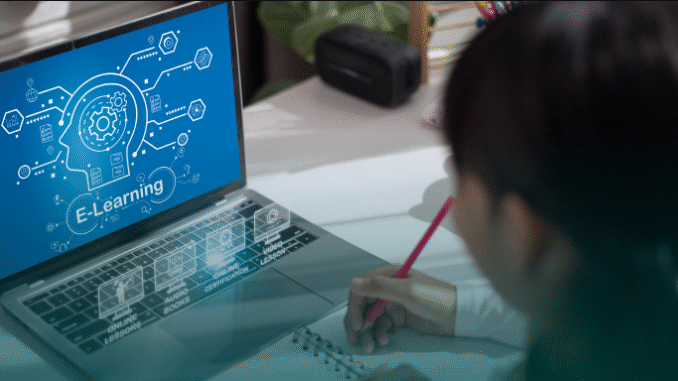
How Technology Is Transforming Education: Trends Every Student Should Know
Education has always been the foundation of progress. But in 2025, technology is shaping learning in ways that were unimaginable just a decade ago. Classrooms are no longer confined to four walls, and learning isn’t limited to textbooks. From artificial intelligence to virtual classrooms, technology is driving an educational revolution that every student should understand.
In this article, we’ll explore how technology is transforming education and highlight the top trends every student should know in 2025.
1. The Rise of Online Learning Platforms
One of the biggest changes technology has brought to education is the rise of online learning. Platforms like Coursera, Udemy, and Khan Academy allow students to learn almost anything—anytime, anywhere.
- Why it matters: Students are no longer restricted to their local schools or universities. They can learn coding from Silicon Valley experts, study art from European museums, or attend virtual lectures from global universities.
- Student advantage: Online platforms provide affordable, flexible, and diverse options for all learners, whether for academic courses, career skills, or hobbies.
2. Virtual Classrooms and Remote Learning
The COVID-19 pandemic accelerated the adoption of virtual learning, and by 2025, it has become an integral part of education. Tools like Zoom, Microsoft Teams, and Google Meet continue to power hybrid classrooms.
- Why it matters: Virtual classrooms break geographical barriers, enabling students from different countries to study together.
- Student advantage: Remote learning provides flexibility, better accessibility, and the chance to collaborate with peers worldwide.
Even traditional schools now integrate online classes, ensuring students are prepared for a digital-first world.
3. Artificial Intelligence (AI) in Education
Artificial intelligence is one of the most powerful technologies reshaping education. AI tools analyze student performance, provide personalized learning paths, and assist teachers with administrative tasks.
- Examples:
- AI tutors that help students with homework.
- Smart grading systems that save teachers time.
- Adaptive learning software that adjusts lessons based on student strengths and weaknesses.
- Student advantage: Personalized support means students get instant feedback, learn at their own pace, and focus on areas where they need improvement.
4. Virtual Reality (VR) and Augmented Reality (AR)
Imagine exploring the pyramids of Egypt or diving into the ocean without leaving your classroom. VR and AR make this possible by creating immersive learning experiences.
- Why it matters: These technologies bring subjects to life and make abstract concepts easier to understand.
- Student advantage: Hands-on simulations, such as virtual science labs or 3D anatomy models, make learning more engaging and memorable.
By 2025, many schools are incorporating VR/AR for history, science, and medical training.
5. Gamification of Learning
Gamification integrates game elements like points, levels, and rewards into lessons. It has grown rapidly as technology makes interactive learning more accessible.
- Why it matters: Students are more engaged when learning feels like play.
- Examples: Apps like Duolingo use gamification to make language learning fun and addictive.
- Student advantage: Gamification improves motivation, memory, and participation, making difficult subjects easier to grasp.
6. Cloud-Based Learning and Digital Resources
Cloud technology allows students and teachers to access resources, assignments, and tools from anywhere. Platforms like Google Classroom, OneDrive, and Dropbox have become essential.
- Why it matters: No more worrying about losing files or missing homework. Everything is stored online and easily accessible.
- Student advantage: Students can collaborate in real-time, access shared documents, and stay organized.
This trend also supports eco-friendly education by reducing the need for printed textbooks and paper assignments.
7. Data-Driven Education
Big data and analytics are helping schools and universities make better decisions. By tracking student performance and behavior, institutions can improve teaching strategies.
- Why it matters: Teachers can identify struggling students early and provide support before problems escalate.
- Student advantage: Data insights create personalized learning plans, ensuring no one is left behind.
For example, if data shows a student consistently struggles with math, extra support and resources can be automatically provided.
8. Mobile Learning (m-Learning)
Smartphones are no longer distractions—they are powerful educational tools. Mobile learning apps allow students to learn on the go.
- Examples:
- Quiz apps for quick revision.
- Flashcard apps for memorization.
- Educational podcasts and audiobooks.
- Student advantage: Flexibility to learn anytime—while commuting, waiting in line, or even during short breaks.
Mobile learning supports microlearning, where students absorb content in small, manageable chunks.
9. Blockchain in Education
Blockchain is gaining attention for its ability to securely store and verify academic records, certificates, and credentials.
- Why it matters: Students no longer need to worry about lost transcripts or fraudulent certificates.
- Student advantage: Blockchain ensures transparency and trust, making it easier for students to apply for jobs or higher studies worldwide.
This technology may also revolutionize scholarship distribution and digital learning contracts.
10. Focus on Soft Skills and Lifelong Learning
Technology isn’t just about hard skills like coding or engineering. It also emphasizes soft skills—critical thinking, communication, creativity, and adaptability.
- Why it matters: The job market in 2025 demands well-rounded individuals who can adapt to constant changes.
- Student advantage: Online platforms and interactive tools help students practice leadership, teamwork, and emotional intelligence alongside academics.
Lifelong learning is now a necessity, not a choice, and technology makes continuous skill-building possible.
11. Smart Classrooms and IoT Integration
The Internet of Things (IoT) has created smarter classrooms equipped with interactive whiteboards, digital attendance systems, and smart projectors.
- Why it matters: Smart classrooms provide real-time interaction and make lessons more dynamic.
- Student advantage: Students enjoy interactive sessions, automated attendance tracking, and better resource management.
This makes learning environments more efficient, safe, and collaborative.
12. Social Media as a Learning Tool
Social media is no longer just for entertainment—it’s becoming an educational tool. Teachers and students use platforms like YouTube, LinkedIn, and even TikTok for learning.
- Examples: Educational channels, discussion forums, and professional networking groups.
- Student advantage: Quick access to knowledge, global networking opportunities, and exposure to different perspectives.
However, students must also learn to use social media responsibly and critically.
Conclusion
Technology is no longer just an accessory to education—it’s the backbone of modern learning. From AI tutors and VR classrooms to blockchain-secured credentials and mobile learning apps, students in 2025 have more tools than ever to succeed.
The key is not just knowing about these trends but also using them wisely. Every student should embrace these innovations to stay ahead, develop essential skills, and prepare for a future where learning never stops.
In short, technology is not replacing teachers—it’s empowering both teachers and students to create smarter, more interactive, and more personalized education.
